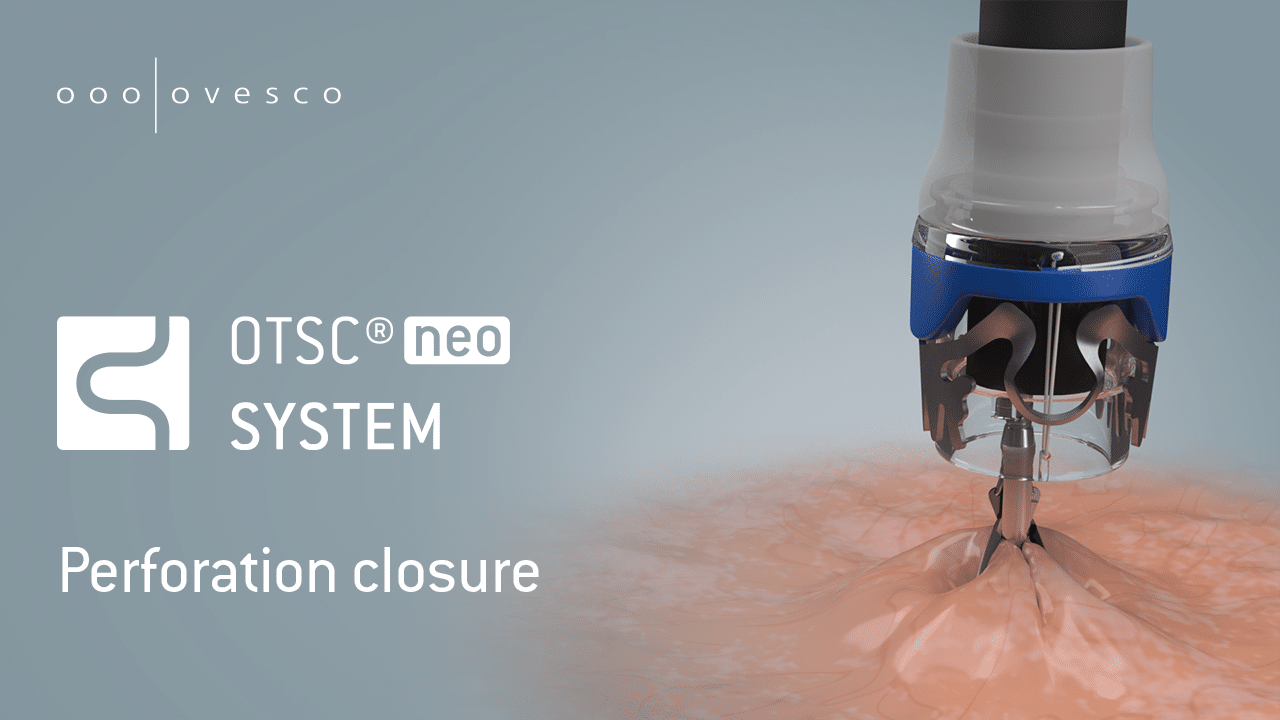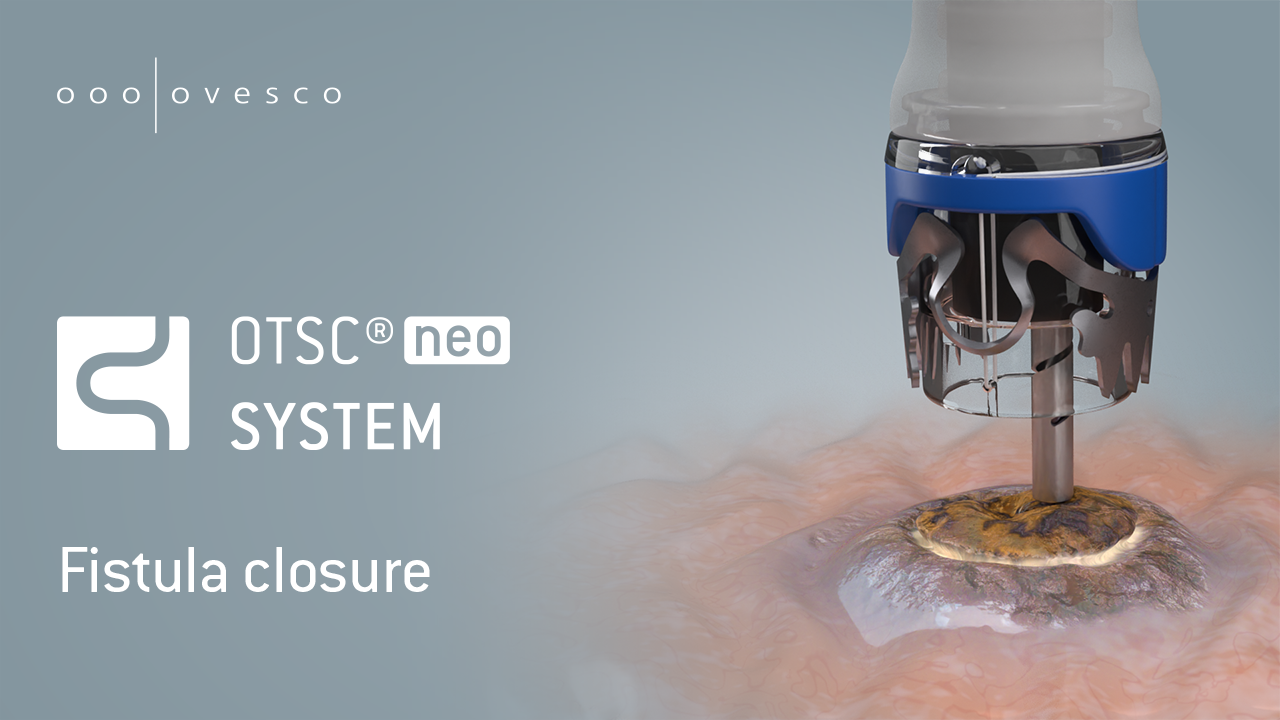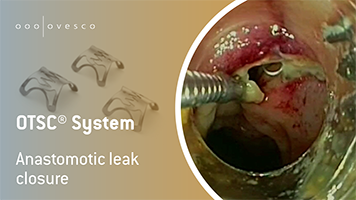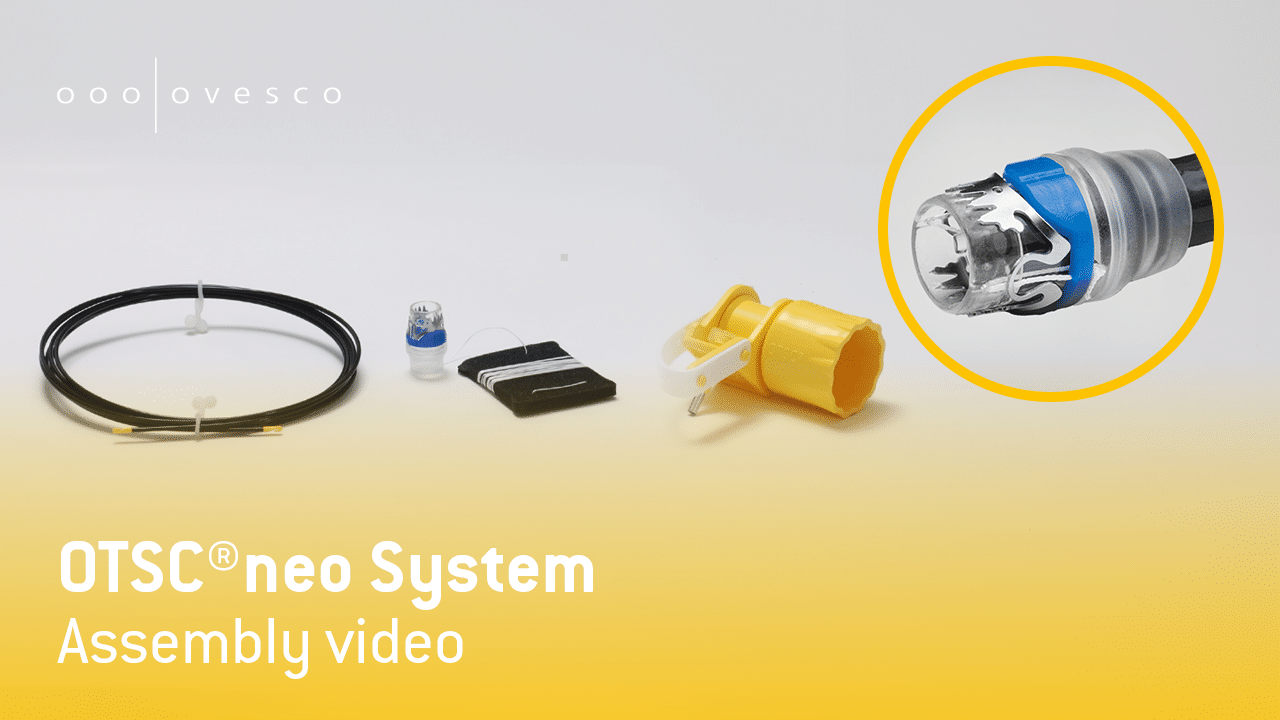Endoscopic closure
Endoscopic closure of gastrointestinal wall defects has established itself as a minimally invasive alternative to surgical intervention. It encompasses a range of techniques for treating acute perforations, leaks, and chronic lesions such as fistulas. Modern systems such as the OTSC®neo System enable simple closure with high clinical effectiveness.
Indications
- Closure of acute lesions
- Closure of leaks
- Closure of chronic lesions such as fistulas
Procedures
The OTSC®neo System is an innovative clip system that is suitable for closing both chronic and acute lesions as well as leaks. The special design of the clip allows for a large compression area and high tissue compression, while the special clip design protects the tissue. Together with the OTSC® Twin Grasper® application aid, OTSC®neo has demonstrated high technical and clinical success in closing acute perforations (Bartell et al. 2020, Voermans et al. 2012).
In chronic lesions, such as fistulas, OTSC®neo is particularly effective when the tissue is additionally prepared or refreshed (Bartell et al. 2020, Vella et al. 2024). Techniques such as APC or other alternatives that remove the epithelial layer can be used for tissue refreshment. The fistula opening is then closed with the OTSC®neo clip and can heal. For the closure of anorectal fistulas, Ovesco offers OTSC® Proctology, a special, sphincter-preserving system.
The OTSC®neo System has also proven itself in the closure of leaks (e.g., anastomotic leaks), especially when combined with endoscopic vacuum therapy (EVT). This involves classic EVT, in which the sponges are changed regularly and the leak is gradually reduced. Once the leakage has been reduced to such an extent that the OTSC®neo clip can adapt to the two edges, the high compression area of the OTSC®neo System ensures effective and rapid closure, resulting in shorter treatment times and improved patient condition (Kollmann et al. 2024).
TTS clips (through-the-scope clips) are applied through the working channel of the endoscope and can thus close acute lesions. They are standard equipment in most endoscopic practices and clinics and are particularly well suited for closing small lesions. For larger or deeper defects, their grasping force is often insufficient to ensure complete wall closure, and several clips usually have to be placed.
Open or laparoscopic surgery is the traditional approach. It allows for definitive closure, but is associated with the known disadvantages of invasive surgery: higher complication rates, higher costs, and a longer recovery period for the patient.
Self-expanding metal stents can bridge and seal large-volume defects. They are mainly used for leaks. However, their use is associated with the risk of migration and the development of pressure ulcers due to the expansion force of the stents. The risk of migration can be reduced by various methods, including the stentFIX System.
This procedure is used in particular for larger leaks with a cavity behind them. A sponge is inserted into the cavity and negative pressure is applied to promote wound healing. EVT is often very effective but requires repeated procedures to change the sponge (every 3-4 days) and a longer hospital stay for the patient. It can be combined well with final closure using an OTSC®neo clip.













